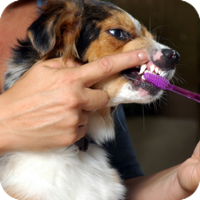
Your pet relies on you everyday for its happiness, health, and well-being.
Your pet relies on you everyday for its happiness, health, and well-being. Brushing, bathing, nail and teeth care, and attention to your pet’s nutritional needs are important parts of daily pet care. And what do you do when you are thinking about taking your pet on a trip? Some pets travel better by car, whereas others travel better by air. Still other pets are better off remaining in familiar surroundings. In any case, advance planning and preparation are necessary when traveling with your pet. Want to know how to help your special companion in an emergency?
Here’s some practical advice: keep your veterinarian’s phone number handy with your other emergency numbers, just in case! Taking care of your pet is a job that last all year long. As the seasons change, preparations should always be made for the change in weather and climate.
Air travel is of most concern to pet owners. You can minimize the chances of an unpleasant experience by following a few guidelines. Federal regulations require that pets be at least 8 weeks old and weaned at least 5 days before flying. Generally, a health certificate (which is not more than 10 days old) must be available before pets will be permitted to fly. A valid rabies vaccination certificate will also be required. Contact the airline well in advance for specific regulations and to secure your pet’s reservation. Try to book a nonstop, midweek flight and avoid plane changes if possible. During warm weather periods choose early morning or late evening flights. In colder months, choose midday flights. Arrive at the airport early, exercise your pet, personally place it in its crate, and pick up the animal promptly upon arrival. Do not take leashed animals on escalators. read more
View Article
Most states prohibit animals from riding on buses and similar regulations restrict travel on trains. Exceptions are made for guide and service dogs accompanying blind and disabled persons. Consult your local carriers in advance for information.
View Article
If your pet is not accustomed to car travel, take it for a few short rides before your trip. Cats should be confined to a cage or crate to allow them to feel secure and to avoid having a pet under your feet while driving. Stick to your regular feeding routine and give the main meal at the end of the day or when you reach your destination. Feeding dry food will be more convenient, assuming your pet readily consumes it. Dispose of unused canned food unless it can be refrigerated. Take along a plastic jug of cold water in case other reliable water sources are not available. Give small portions of food and water and plan to stop every two hours for exercise. Remember to include a leash with your pet’s traveling supplies. read more
View Article

